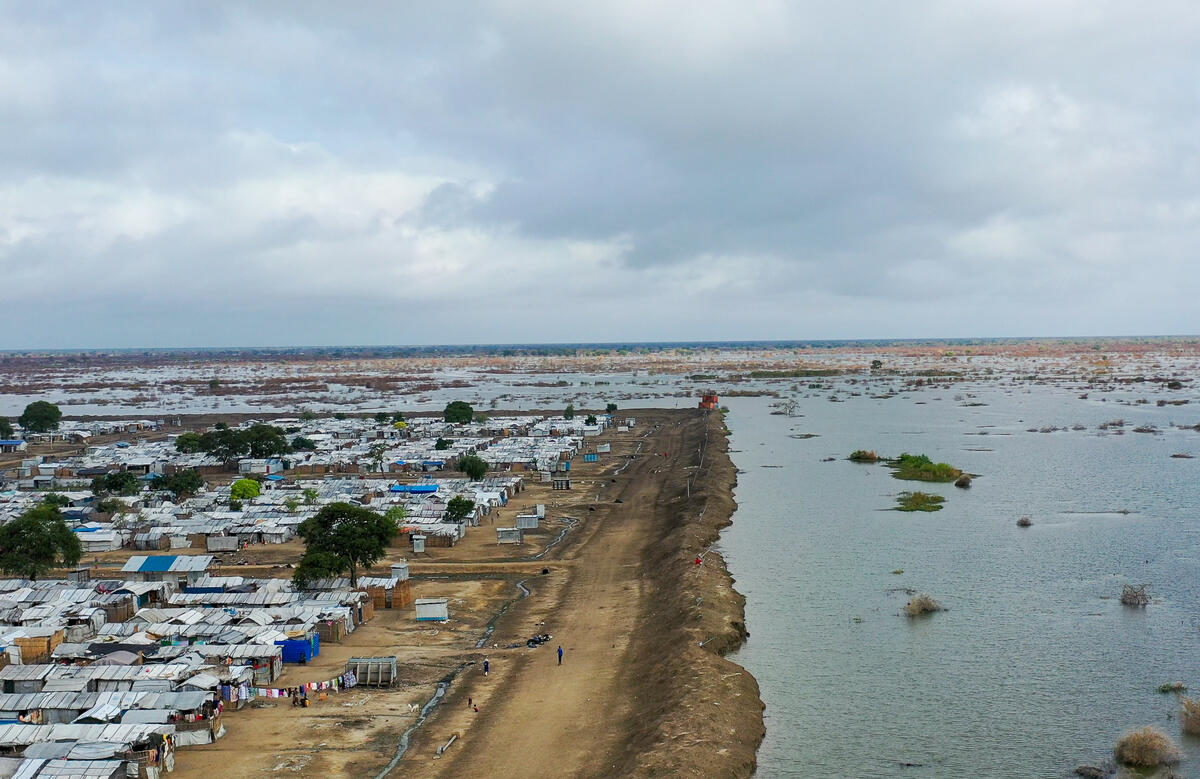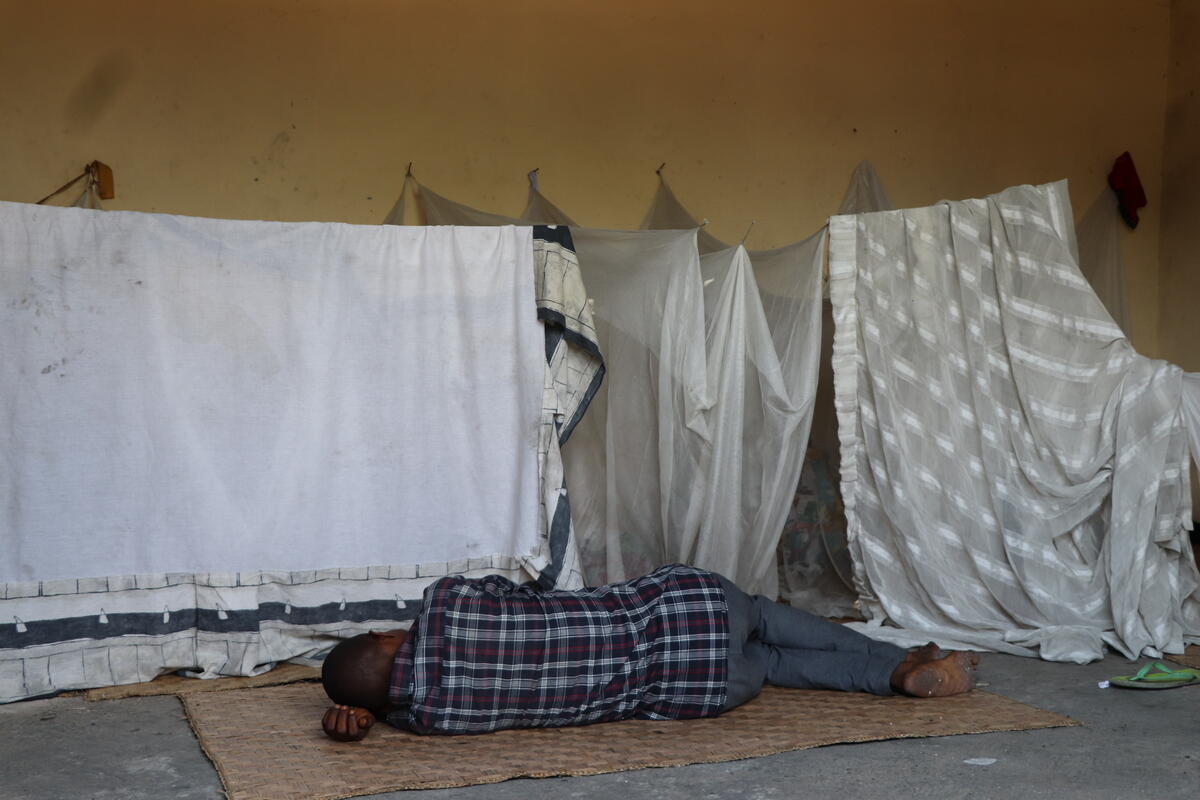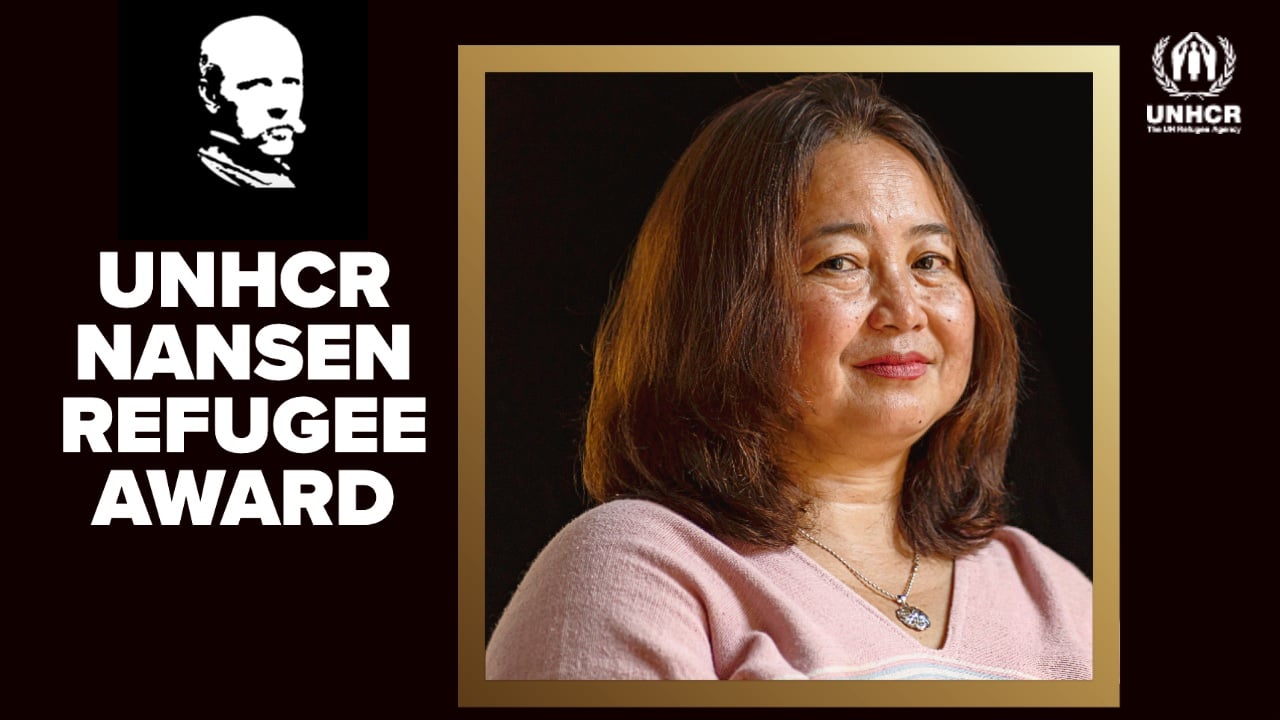UNHCR flies vital shelter aid to North Kivu for displaced Congolese
UNHCR flies vital shelter aid to North Kivu for displaced Congolese

GOMA, Democratic Republic of the Congo, November 13 (UNHCR) - A UNHCR-chartered aircraft carrying vital shelter aid for thousands of displaced civilians arrived in the Democratic Republic of the Congo's (DRC) troubled North Kivu province on Thursday.
The flight touched down in the provincial capital, Goma, after leaving Entebbe Airport in Uganda earlier in the day carrying 1,500 bales of plastic sheeting and three giant portable warehouses, known as Rubb halls, from UNHCR's regional stockpile in Dubai.
The halls will be used as accommodation for some of the more than 67,000 people currently sheltering in two camps in the town of Kibati, which is located just north of Goma, after fleeing fighting between government soldiers and troops loyal to renegade general, Laurent Nkunda.
A day earlier, a six-truck convoy arrived in Goma from UNHCR's aid warehouse in Ngara, Tanzania, carrying 3,525 pieces of plastic sheeting, 2,652 kitchen sets, some 20,220 blankets and 20,200 sleeping mats. The refugee agency had already transported non-food items for some 50,000 people to Goma from Ngara.
The latest items will help ease the plight of the 65,000 internally displaced people (IDPs) in the Kibati I site and the 2,600 IDPs in Kibati II, which are located just two kilometres from the frontline of the opposing military forces.
"What we have received and what we are distributing to displaced families is still short of actual needs. We hope relief goods will continue to arrive at this pace until all displaced families have been assisted," said Ibrahima Coly, head of the UNHCR sub-office in Goma.
The UNHCR airlift on Thursday came as the UN Children's Fund (UNICEF) launched a major distribution of non-food items - including some stock from UNHCR's Goma depot - to the displaced in both Kibati camps. This followed a food distribution by the World Food Programme.
The aid distributions have been warmly welcomed by newly arrived IDPs such as 35-year-old Juliana. "I do not believe what I see," said the mother of five, who had fled to Kibati from the village of Rugari to the north. "We have suffered without blankets or sleeping mats," she added.
Meanwhile, the North Kivu provincial authorities and aid agencies are looking at ways to move the IDPs in Kibati to safer areas, further away from the frontlines.
"We are going to ask the population at Kibati to voluntarily move to Mugunga III, where we have enough space and security," said provincial official, Patrice Lumumba, referring to a proposed new IDP site to the west of Goma with a capacity of up to 22,000 people.
UNHCR and its partners are looking at issues such as infrastructure, sensitization of the IDPs to a move, transportation of the IDPs, registration and security. "The security of displaced persons is our priority and we plan to conduct the exercise within a week," said UNHCR's Coly.
Fighting in North Kivu intensified at the end of 2006. By January 2008, it had brought the total number of IDPs in the region to more than 800,000. Since the fighting resumed in August, some 250,000 civilians have fled, many of them already displaced.
By David Nthengwe in Goma, Democratic Republic of the Congo








